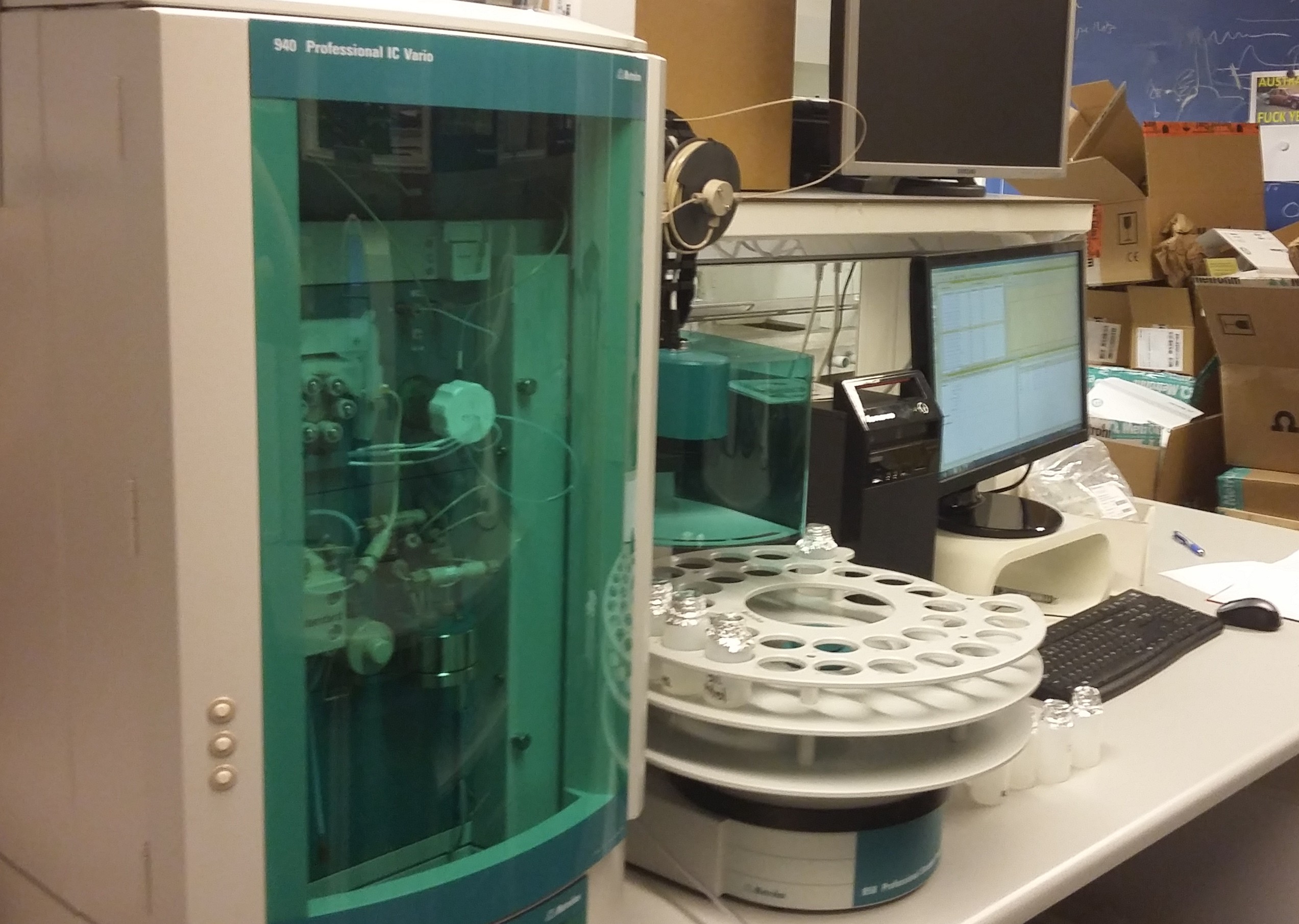Early January a delayed Christmas package was delivered at Centre for Ice and Climate. The package contained the parts for a “940 Professional IC Vario” from the company Methronohm; an Ion Chromatograph (IC).

The Ion Chromatograph is set up so it offers nM detection of negative ions. These include chloride a sea salt proxy in ice cores, and methane sulfonic acid (MSA) another sea salt proxy. While both these proxies for sea ice are well established in the Southern hemisphere. They have not yet been very successful in the Northern hemisphere, partly because the Greenland ice core samples in which they have been measured to date have been stored for a long time.
We hope that by a short storage time of the ice samples, we can obtain great memeasurements of both MSA and chloride fro the coastal Renland ice core using the new ion chromatograph and determine whether they are useful proxies for sea ice variability in the Arctic over the satellite era. In case they are we hope to use them to infer the sea ice variability in the Arctic further back in time.

Further the ion chromatograph can help us determine the sulfate concentrations in the Renland samples. This is crucial to obtain a great timescale as the sulfate arrive when volcanic eruptions take place. By determining the sulfate levels in multiple cores these can be cross dated, making for accurate comparison between sites.
MSA (methano sulfonic acid). Originates from oxidation of DMS (sea ice algae). Correlates at some Antarctic sites to Sea Ice Extent derived from satellites. Site dependent proxy. Some in situ movement in firn.
Chloride: From winter sea ice, require transport eg. wind affected.
Sulfate: Peak concentrations of sulfate in the ice core are observed when volcanic eruptions have taken place.